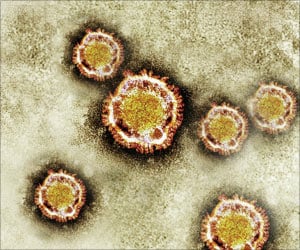The gentle near infra-red light can reverse the eye damage caused by exposure to bright light, according to researchers with the ARC Centre of Excellence in Vision Science.

Their advance has raised hopes for the development of a practical, low-cost and painless treatment for damaged eyes – including for patients suffering from dry macular degeneration (dry AMD), now the most common cause of blindness in developed countries.
The finding, made using an animal model, builds on the evidence the team has established showing that pre-treatment of eyes with near infra-red can help to minimise damage caused by bright light and enhance recovery.
“Macular degeneration is responsible for around a half of the cases of blindness in Australia. The dry form, for which there is still no cure, accounts for 80-90 per cent of cases,” says Dr Valter, of The Vision Centre and Australian National University. “Our research shows clear evidence of recovery of vision cells from light damage, a good model for what happens in dry AMD.”
“Given the very high costs of blindness to any economy, it is encouraging to know that there is a simple, affordable technology in prospect which could help to reduce it.”
Ms Albarracin said that treating the retina with just a few minutes exposure to soft near-infra-red light a day for less than a week had produced a remarkable recovery in damaged photoreceptors (vision cells) which ordinarily would have died.
Advertisement
“We have found that treating the cells before, during or even after light damage raises their protective factors and resistance to stress, and slowly allows their vision function to return. The retina looks really sick – but then it just bounces back. It’s almost a kind of a resurrection.”
The technique could potentially be used to treat a wide range of forms of vision loss, including dry AMD, retinitis pigmentosa, inflammation of the retina and some diseases of the optic nerve, the researchers say.
“We’re using an array of small LEDs (light emitting diodes) that have been tuned to produce near infra-red light at a particular wavelength. These are fairly cheap, making a potential treatment very affordable – especially when you consider the overall costs of blindness,” Dr Valter says.
She says that the evidence yielded by the latest research is now so persuasive that the team could move to human trials this year, if they can secure a clinical partner.
“Near infra-red therapy is very benign and involves no discomfort to the patient. It is already approved by the US Food and Drug Administration for use in sports medicine, for hair loss and so on – so developing a novel therapeutic application for the eyes is likely to be less complex and protracted than, say, developing a new drug,” she adds.
Their paper “Photobiomodulation protects the retina from light-induced photoreceptor degeration,” by Rizalyn Albarracin, Janis Eells and Krisztina Valter appears in Investigative Ophthalmology and Vision Science.
Source-Medindia











